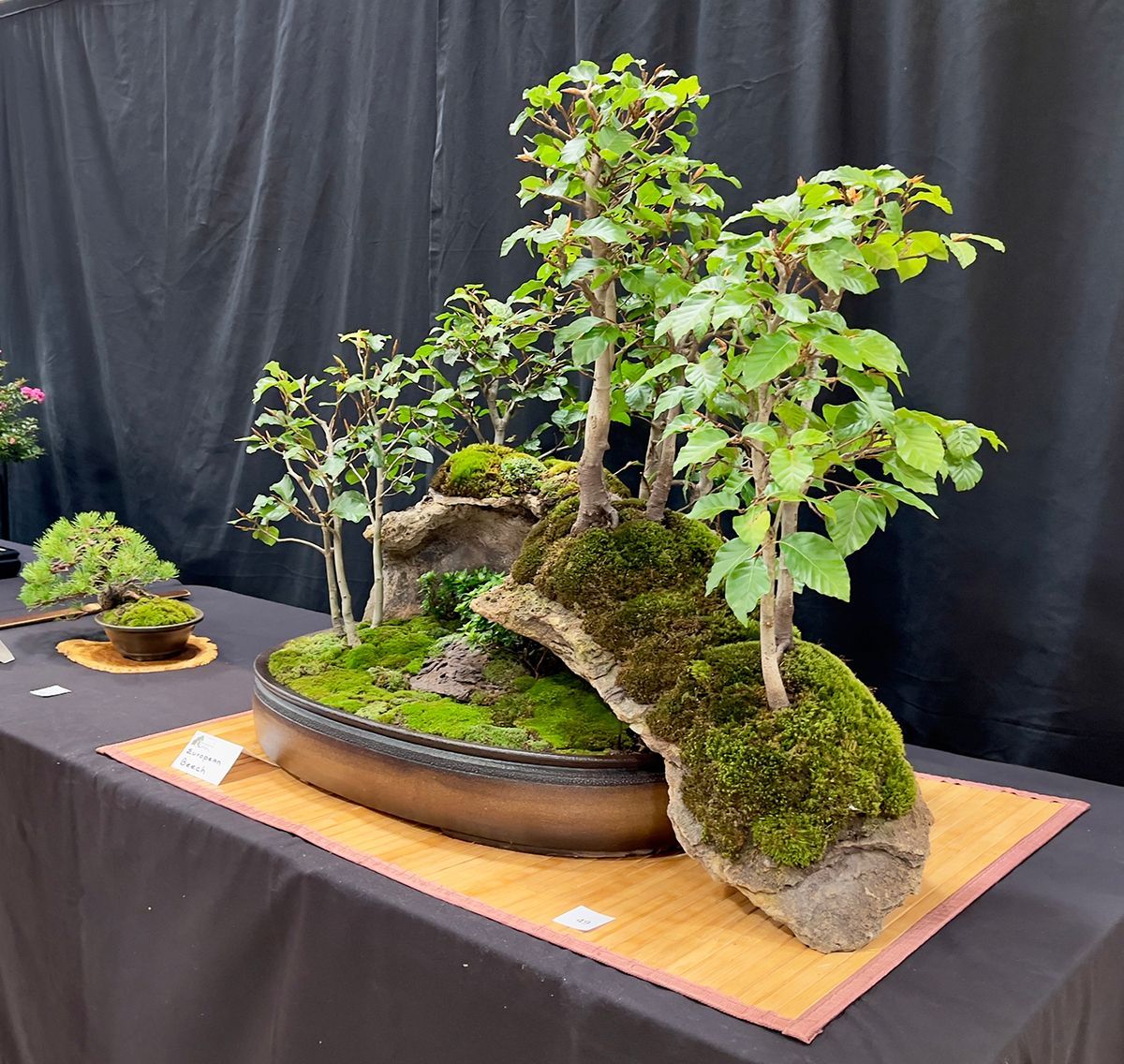North America Viewing Stones: USA
Dual Viewing Stone and Bonsai Exhibition at The North Carolina Arboretum
By Peggy Snow and Felix Laughlin
The relationship between viewing stones and bonsai is often considered as close as the two wheels of a bicycle, both having the power to deepen our appreciation of the natural world. But seldom does one have the opportunity to visit an exhibition in which both are shown in their own display in the same show, as well as displayed accompanying a bonsai. An example of such a dual Bonsai & Viewing Stone Exhibition was presented by the Blue Ridge Bonsai Society on September 7 and 8, 2024, at the North Carolina Arboretum in Asheville, NC. Peggy Snow chaired the Exhibition with assistance from Society President Chris Pazoles and many Society members.
It was a beautiful early fall weekend in this popular mountain city with an attendance at the Arboretum of almost 2,000 visitors, many of whom attended the Bonsai & Viewing Stone Exhibition. The Exhibition included 13 viewing stones and 51 bonsai, all presented in the same auditorium.
The viewing stones were from Japan, North America, and China. They included several mountain stones, an unworked natural chrysanthemum stone, a water-pool stone, an unworked hut stone, a Sado Island stone, and a Gobi Desert shelter stone.
The most famous viewing stone in the show was a stunning “snow-capped” mountain stone from Japan named "Kosetsu" that won the “Maggio Associates Award for the Finest Suiseki” at the U.S. National Bonsai Exhibition in 2021.
Most of the stones were mounted in carved wooden diaza. In contrast, the water-pool stone was placed in sand in a ceramic suiban, and an oblong river stone with natural markings evoking a meditating monk was seated on a small orange zafu cushion placed in front of a miniature antique screen with a small temple bell on the side. An accompanying educational poster traced the aesthetic history and explained the meaning of viewing stones as an art form.
Attendees were delighted and surprised to find the viewing stone display as an adjunct to the bonsai display, with many saying this was their first introduction to the art of viewing stones. The display was so well received that quite a few people suggested that, in addition to having a "People's Choice Award" for the bonsai categories, the Society should add such an award for the viewing stone category, an excellent idea we will implement at next year's exhibition. Comparing this art form with bonsai, visitors quickly saw the advantage of collecting viewing stones, which like bonsai can awaken the soul but never have to be watered.
Bonsai artist Dan O’Neal incorporated stones into his displays in two ways. One of his displays in the bonsai section was a venerable Nyohozan satsuki azalea accompanied by a chrysanthemum stone from Japan that he named “Starburst.”
In addition, Dan’s bonsai named “Natural Bridge Cavern,” which received the “People’s Choice” Award in the advanced bonsai category, combined a large natural stone slab emerging from a ceramic container made by local bonsai ceramicist Rob Wallace. The result was a unique hardwood forest composition reminiscent of Masahiko Kimura’s famous slanting Hinoki forest. The time when each of the displayed stones was first harvested ranged from long ago to very recently. The meditating monk stone, for example, was just discovered last year in a nearby river in North Carolina, demonstrating that you don’t have to buy a viewing stone from Japan. Instead, a natural stone retrieved from a river can be just as pleasing, making stone appreciation accessible to everyone.

Undoubtedly, the fun of looking for and finding one’s own viewing stones inspired some of the attendees to embark on a new outdoor pursuit.

